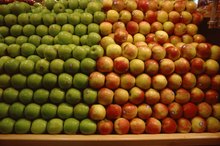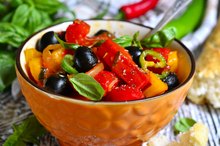What does fact checked mean?
At Healthfully, we strive to deliver objective content that is accurate and up-to-date. Our team periodically reviews articles in order to ensure content quality. The sources cited below consist of evidence from peer-reviewed journals, prominent medical organizations, academic associations, and government data.
- PubMed: Electromagnetic Interference of Implantable Unipolar Cardiac Pacemakers by an Induction Oven
- PubMed: Electromagnetic Interference of Implantable Unipolar Cardiac Pacemakers by an Induction Oven
- PubMed: Effects of Different Cooking Methods on Health-Promoting Compounds of Broccoli
- PubMed: Effects of Different Cooking Methods on Health-Promoting Compounds of Broccoli
The information contained on this site is for informational purposes only, and should not be used as a substitute for the advice of a professional health care provider. Please check with the appropriate physician regarding health questions and concerns. Although we strive to deliver accurate and up-to-date information, no guarantee to that effect is made.
Effects of Induction Cooking on the Nutritional Value of Food
All methods of cooking have some affect on the amount of nutrients in food 1. Induction cooking uses electromagnetism generated by sophisticated electronics to heat the cooking vessel, which then cooks the food 2. Induction works only on cooking materials made of magnetic material such as cast iron and stainless steel 2. The energy heats the pots, not the food. Induction effects on food nutrients can be compared to cooking in a standard oven 1. As of 2010, no specific studies on induction cooking and nutritional values had been carried out 2.
Fruits
Baking, boiling or frying foods using an induction stove reduces the nutrient content of foods 1. The specific amount of nutrient loss depends on the cooking method and the particular vitamin or mineral 1. Nutrient loss can range anywhere from 0 to 75 percent, according to the USDA nutrient retention list.
Vegetables
Pros & Cons of Raw Food Diets
Learn More
Minerals loss for vegetables in induction cooking is less than with vitamins. Minerals are lost in some induction cooking methods, but are not as affected by cooking method as vitamins. Sautéed foods lost an average of 10 percent of potassium and copper, but retained 100 percent zinc. Other cooking methods such as:
- baking vegetables retained 100 percent zinc
- iron copper
- magnesium
- phosphorus
- potassium
- according to the USDA
- Minerals loss for vegetables in induction cooking is less than with vitamins.
- Minerals are lost in some induction cooking methods, but are not as affected by cooking method as vitamins.
Proteins
Meats suffer the most nutrient loss in induction cooking 2. Thiamine is the most susceptible to degradation and leaching from meat from thermal damage, according to a study led by S. Severi published in the 1997 “European Journal of Cancer Prevention."
Related Articles
References
- The Induction Site: Induction Cooking: Pros and Cons
- PubMed: Electromagnetic Interference of Implantable Unipolar Cardiac Pacemakers by an Induction Oven
- PubMed: Effects of Different Cooking Methods on Health-Promoting Compounds of Broccoli
- Adriana D.T. Fabbri, Guy A. Crosby, "A Review of the Impact of Preparation and Cooking on the Nutritional Quality of Vegetables and Legumes." Int J Gastron Food Sci, Volume 3, 2016.
- Gao-feng Yuan, Bo Sun, Jing Yuan, and Qiao-mei Wang."Effects of Different Cooking Methods on Health-promoting Compounds of Broccoli." J Zhejiang Univ Sci B. 2009 Aug; 10(8): 580–588.
- Nestle Professional. "Cooking Methods."
- Nigerian Food Journal. "Effect of Boiling and Frying on the Total Carbohydrate, Vitamin C and Mineral Contents of Irish (Solanun tuberosum) and Sweet (Ipomea batatas) Potato Tubers."
Writer Bio
Caroline Thompson is a professional photojournalist who has been working for print and online publications since 1999. Her work has appeared in the "Sacramento Bee," "People Magazine," "Newsweek" and other publications. She holds a Bachelor of Arts in photojournalism from California State University at Hayward and a personal trainer certification from the university's Health and Fitness Institute.









